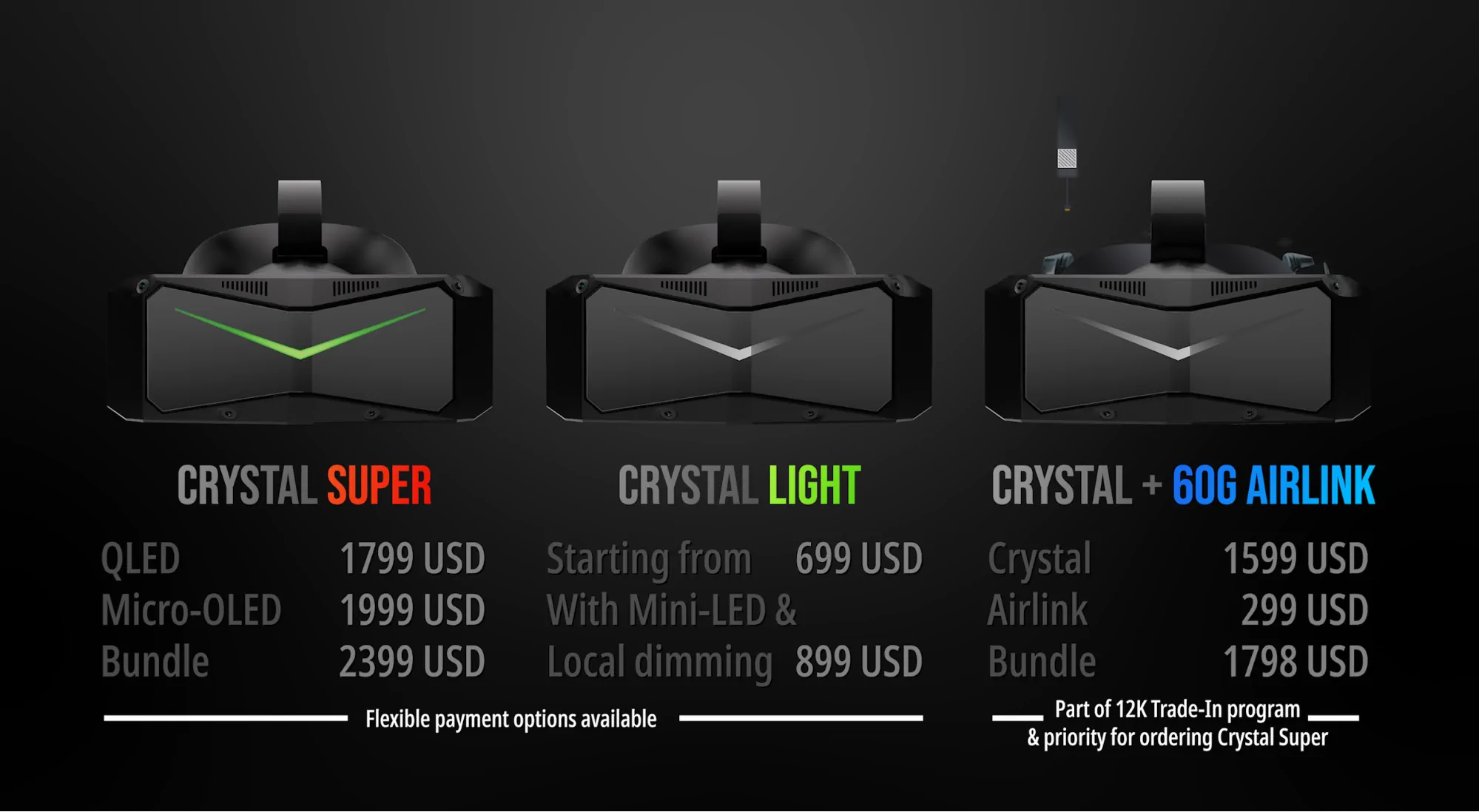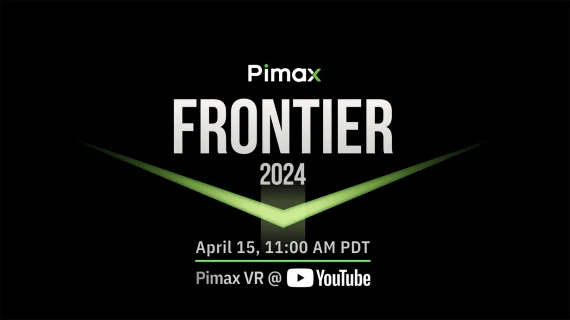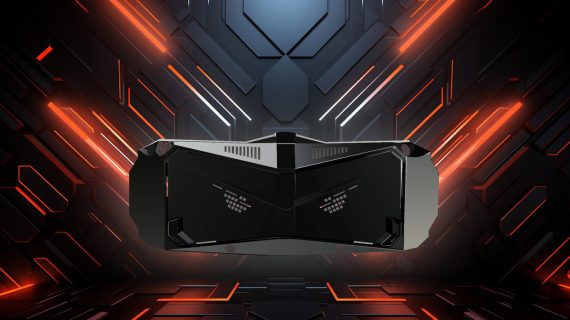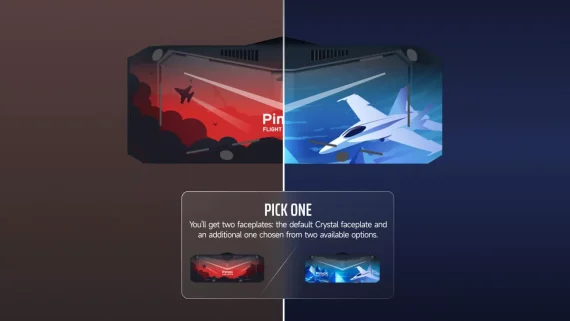Pimax reveals two new high-end VR headsets at its annual Frontier keynote
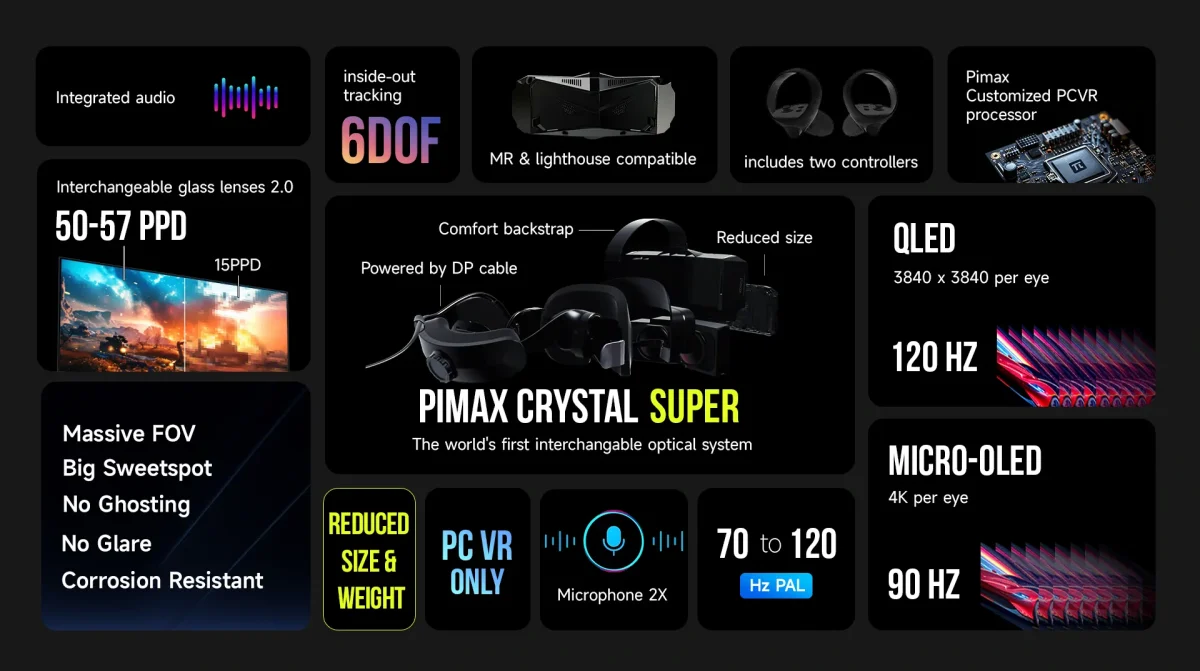
Pimax, creators of the Pimax Crystal VR headset, announced two new models of VR headsets at its 2024 Frontier event, held on YouTube this Monday.
The first is the Crystal Super, a new ultra-high-end headset, packing 29.5 million pixels and the world’s first changeable optical engine, allowing users to swap between QLED and micro-OLED panels.
The second is the Crystal Light, which offers the same 16.6 million pixels as the Pimax Crystal but is a much more budget-friendly option, starting from 699 USD. Additionally, Pimax unveiled the specs for the 60G Airlink module, which enables true high-fidelity wireless PCVR through WiGig technology.
Crystal Super: The world’s first changeable optical engine for QLED & micro-OLED
The Crystal Super represents a significant leap forward from the Crystal. With a total pixel count of 29.5 million, it significantly surpasses the Crystal’s 16.6 million pixels, enabling a larger field of view (FOV), and higher pixels per degree (PPD) at the same time. According to Pimax, these enhancements, combined with Pimax’s proprietary glass lenses, make Crystal Super the clearest and the most immersive VR headset on the market.
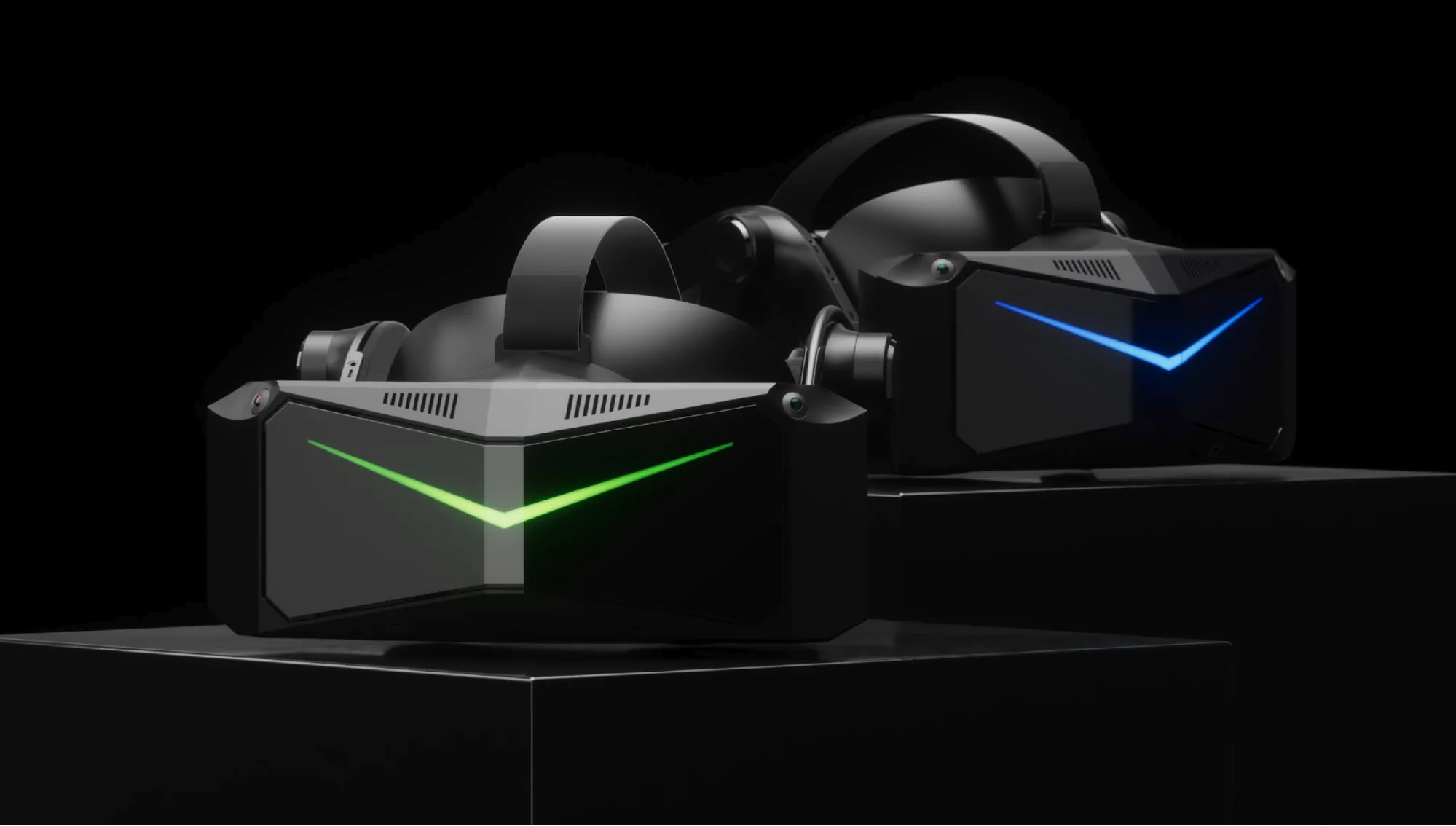
Besides FOV and PPD, the choice of display panel technology plays a critical role in the user’s visual experience. While QLED remains the top choice for high-end VR headsets, OLED panels are gaining traction, particularly following the Apple Vision Pro’s release. Each technology offers distinct advantages for specific applications. The Crystal Super allows users the flexibility to choose between these technologies or opt for both, leveraging the advantages of each at a reasonable cost.
This flexibility stems from Pimax’s introduction of the world’s first replaceable optical engine system at the event. This system allows effortless swapping of the optical engine, which includes both the display panels and lenses, thereby maximizing versatility and users’ freedom to choose.
An example provided by Pimax is that owners of both QLED and OLED optical systems can use the OLED version to watch a movie, for example, enjoying the deeper black levels, and effortlessly switch to the QLED optical system for a gaming session, which offers a higher field of view.
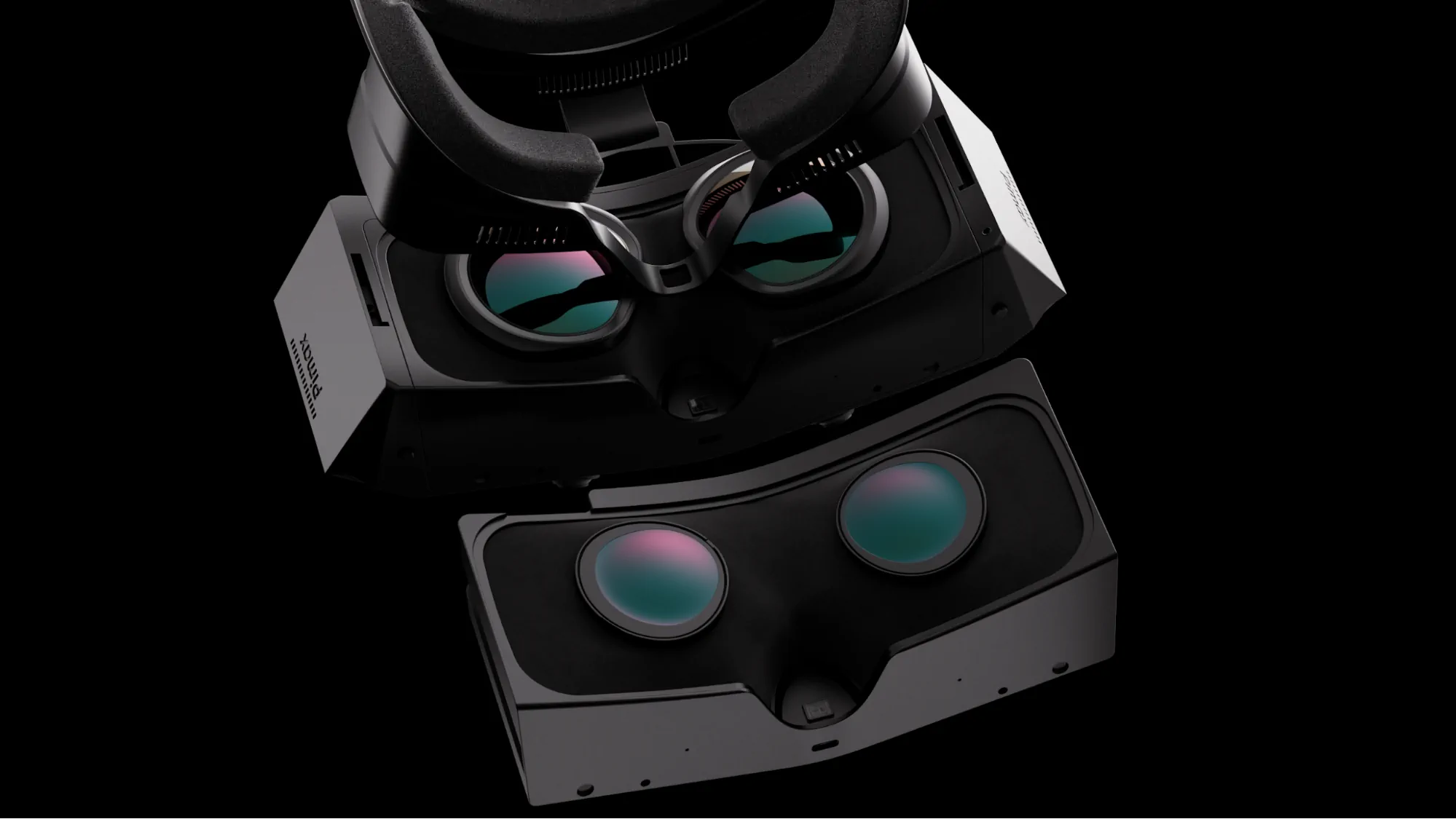
Specs
The QLED engine is paired with interchangeable glass aspheric lenses, while the micro-OLED engine incorporates glass pancake lenses, another world first from Pimax. Regardless of the display-lens combination, the headset features advanced inside-out tracking via four cameras, eye-tracking for automatic IPD (Inter-pupillary Distance) adjustments, dynamic foveated rendering, and built-in audio. The Crystal Super is designed to be a pure PCVR headset without an XR2 chip and no batteries, either.
Display: QLED+mini LED, or Micro-OLED
Resolution: 3840 x 3840 pixels per eye (QLED version, micro-OLED)
Pixel amount: 29.5 million (QLED version, micro-OLED 4K per eye, more pixels than the Apple Vision Pro)
Brightness: 200 nits (QLED version, micro-OLED TBC)
Refresh rate: 72Hz/90Hz/120Hz (QLED version), 70Hz/90Hz (micro-OLED 70Hz/90Hz)
Optics: Glass aspheric lenses (QLED version), glass pancake lenses (micro-OLED)
Audio: Integrated, 3.5mm audio jack 1x, microphones 2x
Tracking: Inside-out, Lighthouse cover optional
VR Mode: PCVR Only
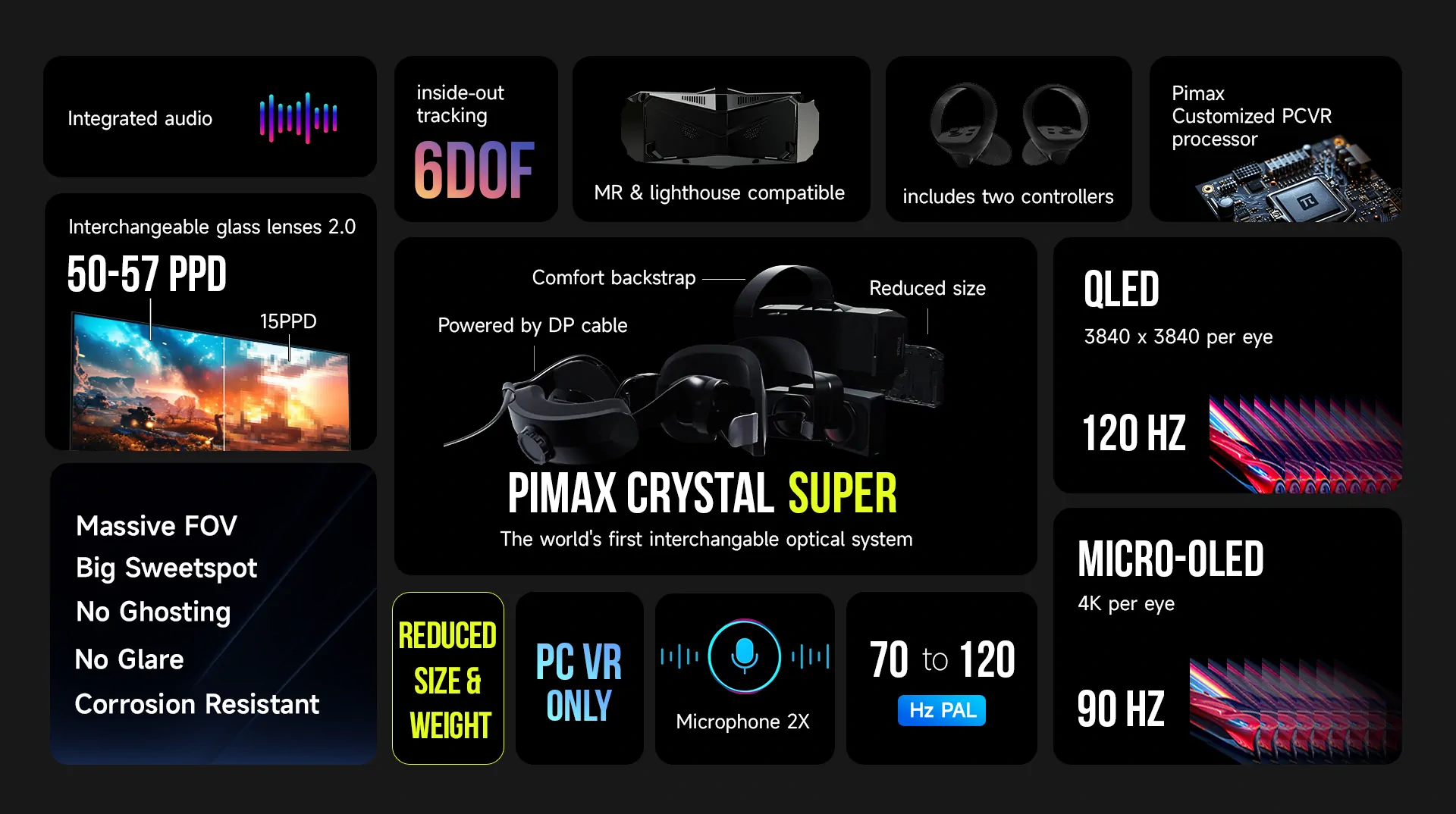
The price of the Pimax Crystal Super will start from $1.799 USD (excluding VAT), and it’s estimated to start shipping Q4 this year.
Crystal Light: High-end PCVR for everyone?
The Crystal Light serves as a streamlined iteration of the Pimax Crystal, retaining the core specifications that underpinned the original model’s success while removing features less important to PCVR use cases.
It boasts a 2880 x 2880 resolution per eye, with a maximum refresh rate of 120 Hz, and continues to employ glass aspheric lenses. Pimax hopes that these features ensure the Crystal Light remains a highly competitive option in the high-performance VR market.
This new, budget-friendly model is introduced as a pure PCVR headset with no battery, no XR2 processor, and no standalone capabilities. Such adjustments have not only significantly reduced costs, but also decreased the weight by 30%. The decreased weight, coupled with enhanced ergonomics, will likely improve the comfort level of the Crystal Light compared to its predecessor, which is notoriously bulky and heavy.
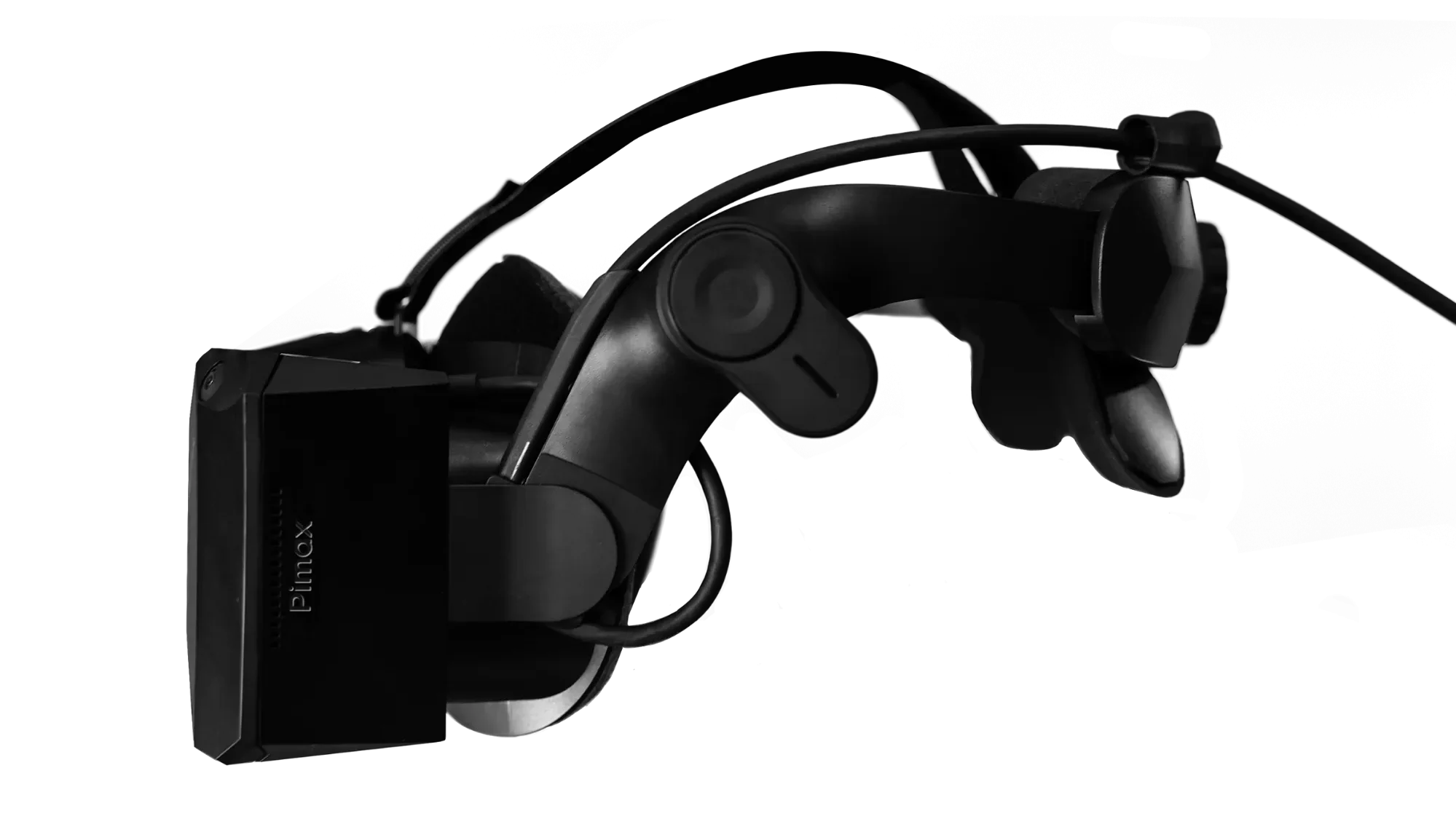
To further manage costs, the Crystal Light does not feature interchangeable lenses like the Crystal, nor does it include the eye-tracking feature. However, Pimax has upgraded their Fixed Foveated Rendering technology, which does not rely on the eye-tracking feature as the Dynamic Foveated Rendering does, to continue to assist users in compensating for potential GPU power limitations. In practice, the Fixed Foveated Rendering will spend fewer resources on the edges of the user’s field of view, focusing on the center of the screens where the user is most likely to be looking.
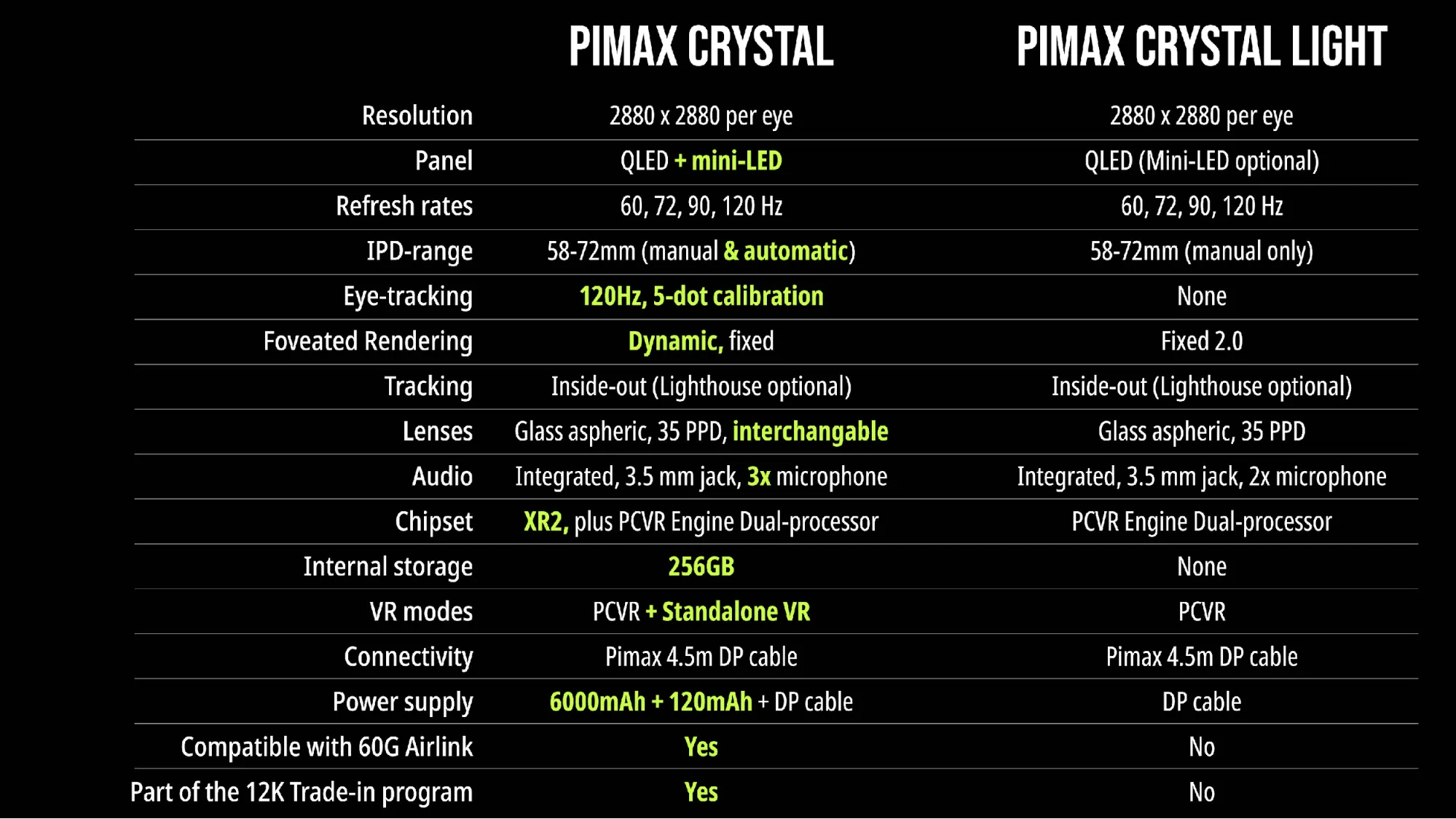
These strategic choices enable Pimax to position the Crystal Light at a significantly more affordable price, at $699 USD, marking a substantial reduction from the Crystal’s $1.599 USD price point.
In their Frontier keynote, Pimax highlighted: “We want to make the Crystal and its clarity available to more PCVR gamers, who want high clarity. We’re thinking about HP Reverb G2 , Rift S, and the Valve Index. If they consider a headset upgrade, where do they go? Many headsets that were previously available to them have now been discontinued.”
In addition to the product launch, Pimax put together a series of answers to the most popular questions from the community:
Q: Is the version without local dimming merely a software alteration, or does it exclude the backlight unit altogether?
A: The version without local dimming excludes the backlight unit.
Q: Are the lenses and displays identical to the standard Crystal model?
A: Yes, they are 100% identical.
Q: Is the lighthouse faceplate compatible with Crystal Light?
A: Yes, the Light Lighthouse faceplate is compatible with the Crystal, similar to the standard model. Hence, the pricing remains consistent. Users can opt for it as an accessory according to their preference.
Q: Will the Crystal be discontinued?
A: No, the Crystal will continue to be available as it has garnered widespread acclaim since its launch. The upcoming 60G Airlink will introduce a wireless mode for the Crystal. Initial testing indicates that the wireless mode offers visual effects almost identical to the wired mode. The Crystal will maintain its unique advantages and will later support MR panels. Moreover, it remains a vital product for business industry customers.
Q: Crystal Light and Super have removed the XR2. Does this pose any risk for 6dof?
A: There’s no cause for concern. Both the Light and Super models support inside-out tracking. Pimax’s proprietary 6DoF algorithm, which has been under development for two years, ensures stability and performance parity with the Crystal. Leveraging the computational prowess of a PC for PC VR further guarantees stable performance.
Q: Are prices available in currencies other than US dollars?
A: Yes, prices for Crystal Light in various currencies can be found here.

Pimax would love to hear your thoughts about the Crystal Light, which you can do via this form.
The Crystal Light is available for pre-order now and shipping really soon. Pimax’s estimate is May 2024.
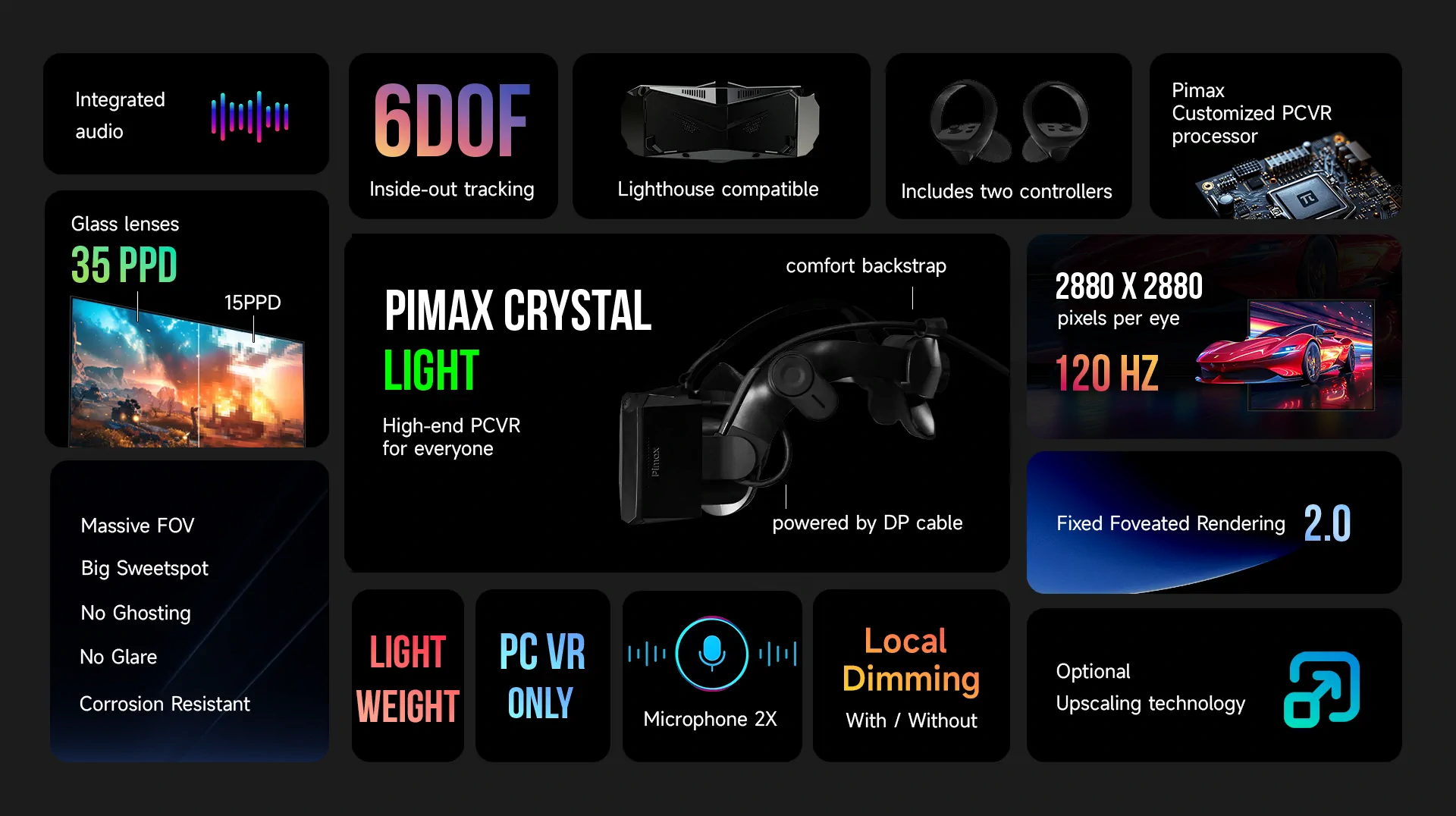
Pimax Crystal Airlink
Pimax also clarified that the introduction of the two new models did not mean that they would discontinue the Pimax Crystal.
The Crystal has been designed from the start as a wireless PCVR headset, to deliver high fidelity at full resolution and low latency, all without having to be physically tethered to a PC. This requires extremely high bandwidth and highly efficient utilization, necessitating the XR2 chip and battery as essential parts of the solution, and the original Pimax Crystal being the only model in the Crystal line-up to feature XR2 chips and batteries.
The wireless feature needs to be supported with an extra set of hardware, the 60G Airlink from Pimax, which includes a combined transmitter and receiver, plus a lightweight dongle that attaches to the headset via a micro-HDMI connection. The transmitter and receiver connect to the PC through HDMI, forming a complete hardware suite for wireless operation.
The 60G Airlink is a highly integrated solution that was designed in conjunction with the Pimax Crystal, ensuring the dongle adds negligible weight to the headset.
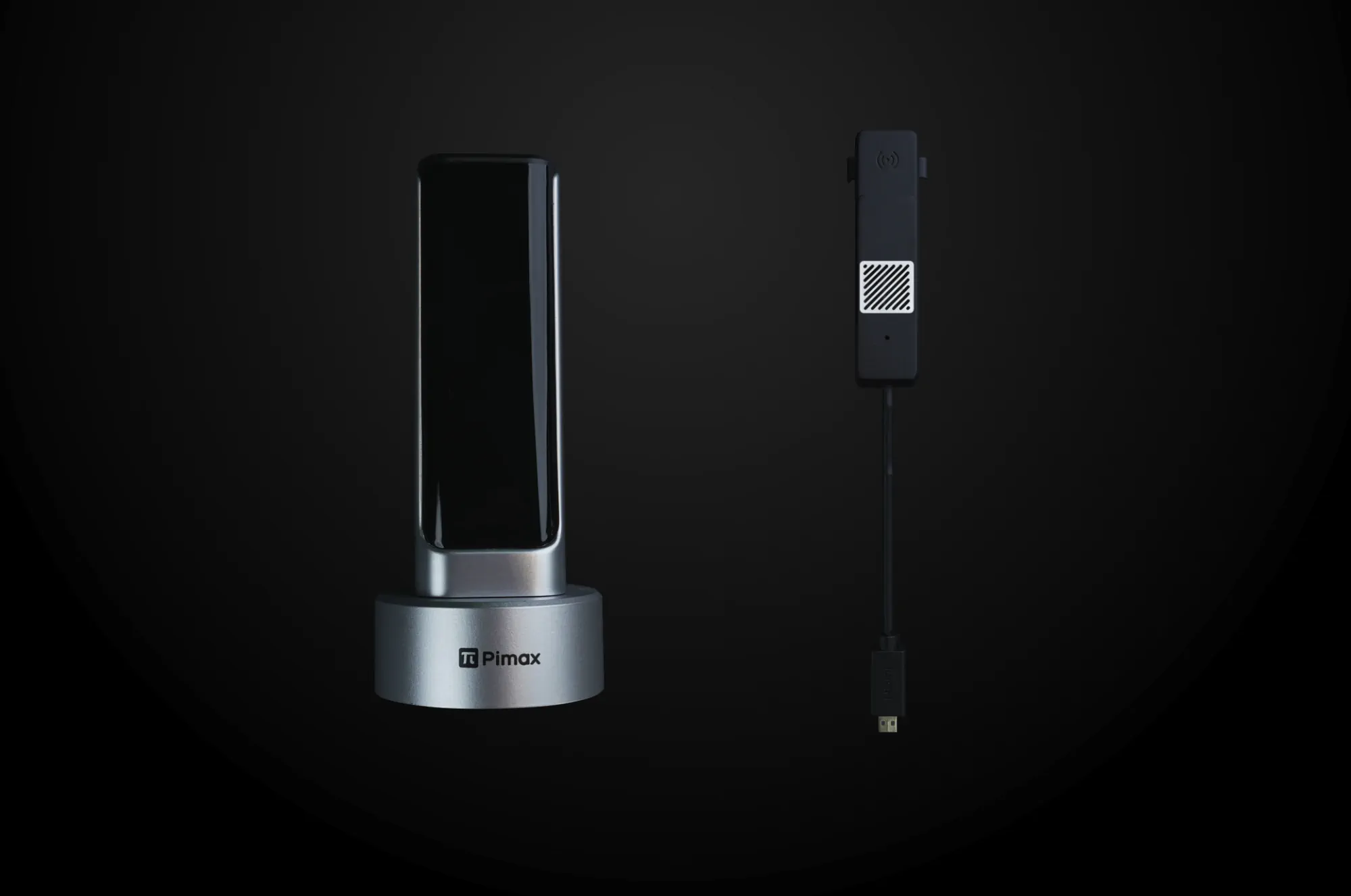
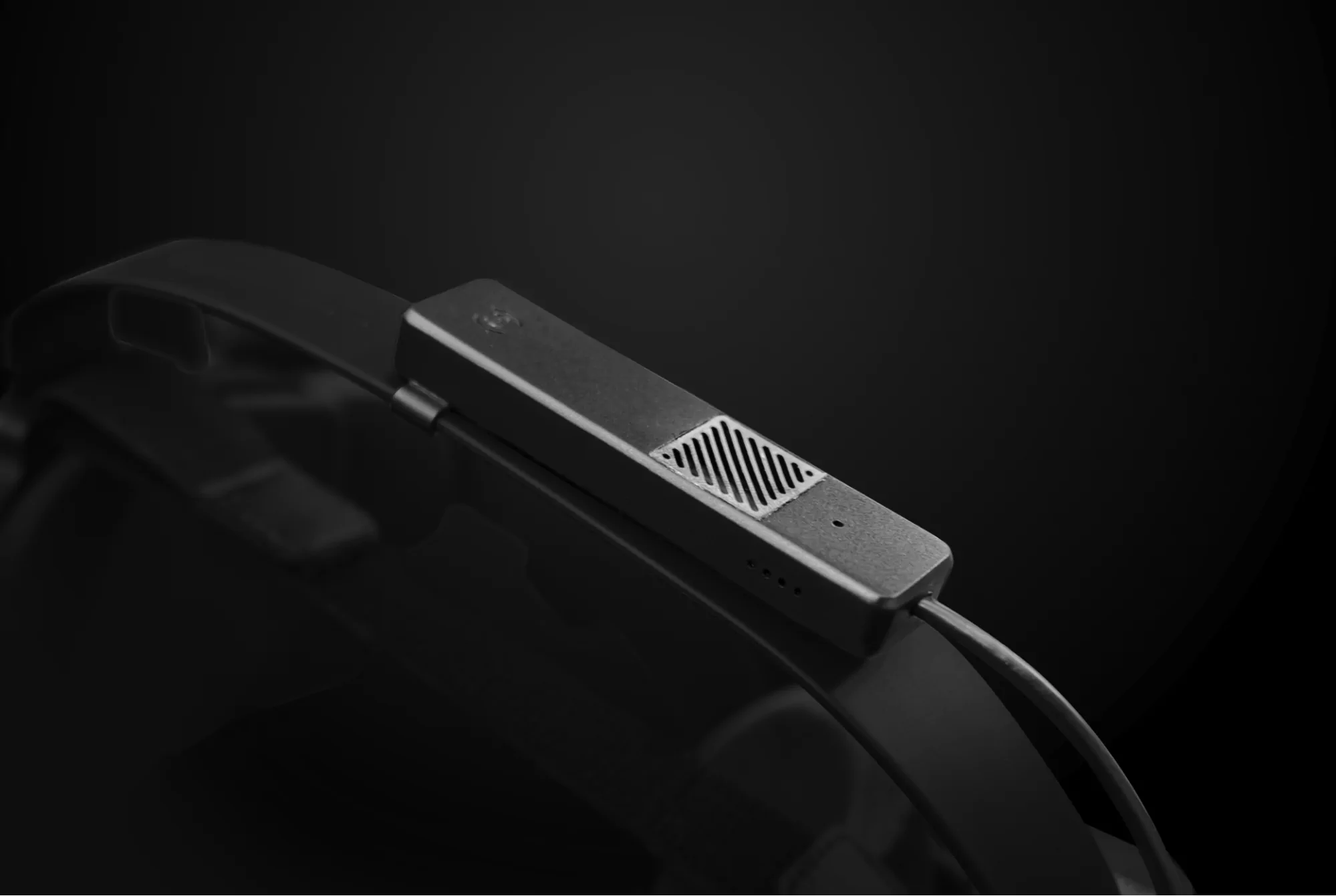
Utilizing Wigig technology, Pimax’s 60G Airlink offers significantly higher bandwidth than traditional WiFi solutions. Unlike even WiFi 6E — currently the fastest WiFi technology for VR headsets — which necessitates heavy visual compression and introduces noticeable latency, Wigig technology minimizes these compromises, ensuring an exceptional wireless VR experience overall.
Pimax has stated that the Pimax Crystal 60G Airlink module will:
- Support the full resolution at 2880 x 2880 resolution per eye
- Requires minimal compression
- Supports 90 Hz refresh rate
- Ultra-low latency
- The expected battery life is 2 to 3 hours
The hardware for the 60G Airlink, which was demoed at CES2024 earlier this year, is now finalized and the price is set at $299 USD, ready for shipping later this year.
Pricing Detail
